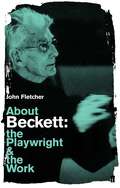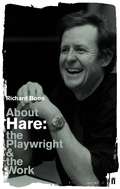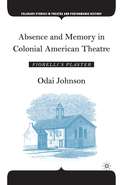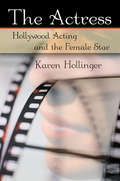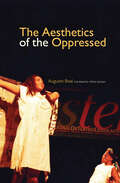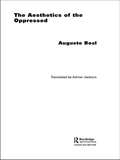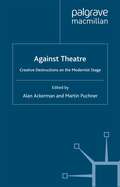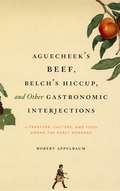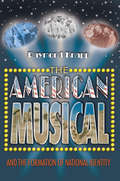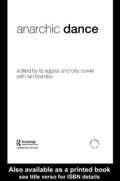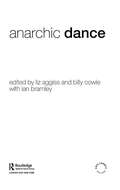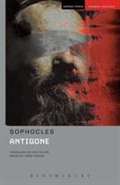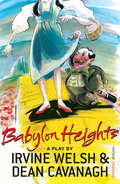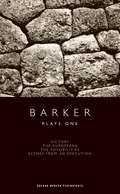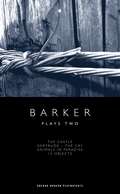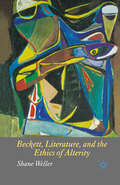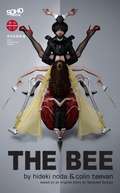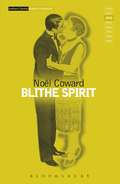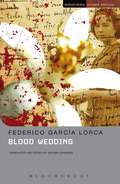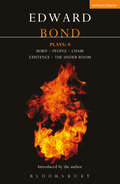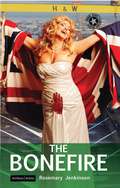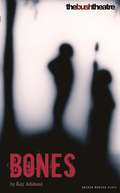- Table View
- List View
About Beckett: The Playwright and the Work (About... The Playwrights And Their Works)
by John FletcherIn About Beckett Emeritus Professor John Fletcher has compiled a thorough and accessible volume that explains why Beckett's work is so significant and enduring. Professor Fletcher first met Beckett in 1961 and his book is filled not only with insights into the work but also interviews with Beckett and first-hand stories and observations by those who helped to put his work on the stage, including Dame Peggy Ashcroft, Roger Blin, Peter Hall, Max Wall and George Devine. As an introduction to Beckett and his work, Professor Fletcher's book is incomparable.
About Hare: The Playwright and the Work (About... The Playwrights And Their Works)
by Richard BoonThis series contains what no other study guides can offer - extensive first-hand interviews with the playwrights and their closest collaborators on all of their major work, put together by top academics especially for the modern student market. As well as invaluable synopses, biographical essays and chronologies, these guides allow the student much closer to the playwright than ever before!In About Hare, Professor Richard Boon provides an in-depth study of one of the great post-war British playwrights. His study includes a rigorous analysis of Hare's work, as well as interviews with Hare and those who helped to put his work on stage, including Bill Nighy, Vicki Mortimer, Sir Richard Eyre, Lia Williams and Jonathan Kent. With the increasing interest in this major playwright, whose work attracts the very best of acting talent, this book is a timely publication for student and theatregoer alike.
Absence and Memory in Colonial American Theatre: Fiorelli's Plaster (Palgrave Studies in Theatre and Performance History)
by O. JohnsonHistory, they say, has a filthy tongue. In the case of colonial theatre in America, what we know about performance has come from the detractors of theatre and not its producers. Yet this does not account for the flourishing theatrical circuit established between 1760 and 1776. This study explores the culture's social support of the theatre.
The Actress: Hollywood Acting and the Female Star
by Karen HollingerThe Actress: Hollywood Acting and the Female Star investigates the contemporary film actress both as an artist and as an ideological construct. Divided into two sections, The Actress first examines the major issues in studying film acting, stardom, and the Hollywood actress. Combining theories of screen acting and of film stardom, The Actress presents a synthesis of methodologies and offers the student and scholar a new approach to these two subjects of study.
The Actress: Hollywood Acting and the Female Star
by Karen HollingerThe Actress: Hollywood Acting and the Female Star investigates the contemporary film actress both as an artist and as an ideological construct. Divided into two sections, The Actress first examines the major issues in studying film acting, stardom, and the Hollywood actress. Combining theories of screen acting and of film stardom, The Actress presents a synthesis of methodologies and offers the student and scholar a new approach to these two subjects of study.
The Aesthetics of the Oppressed
by Augusto BoalAugusto Boal's workshops and theatre exercises are renowned throughout the world for their life-changing effects. At last this major director, practitioner, and author of many books on community theatre speaks out about the subjects most important to him – the practical work he does with diverse communities, the effects of globalization, and the creative possibilities for all of us.
The Aesthetics of the Oppressed
by Augusto BoalAugusto Boal's workshops and theatre exercises are renowned throughout the world for their life-changing effects. At last this major director, practitioner, and author of many books on community theatre speaks out about the subjects most important to him – the practical work he does with diverse communities, the effects of globalization, and the creative possibilities for all of us.
Against Theatre: Creative Destructions on the Modernist Stage (Performance Interventions)
by A. Ackerman M. PuchnerAgainst Theatre shows that the most prominent writers of modern drama shared a radical rejection of the theatre as they knew it. Together with designers, composers and film makers, they plotted to destroy all existing theatres. But from their destruction emerged the most astonishing innovations of modernist theatre.
Aguecheek's Beef, Belch's Hiccup, and Other Gastronomic Interjections: Literature, Culture, and Food Among the Early Moderns (Chicago Series On Sexuality, History And Society)
by Robert AppelbaumWe didn’t always eat the way we do today, or think and feel about eating as we now do. But we can trace the roots of our own eating culture back to the culinary world of early modern Europe, which invented cutlery, haute cuisine, the weight-loss diet, and much else besides. Aguecheek’s Beef, Belch’s Hiccup tells the story of how early modern Europeans put food into words and words into food, and created an experience all their own. Named after characters in Shakespeare’s Twelfth Night, this lively study draws on sources ranging from cookbooks to comic novels, and examines both the highest ideals of culinary culture and its most grotesque, ridiculous and pathetic expressions. Robert Appelbaum paints a vivid picture of a world in which food was many things—from a symbol of prestige and sociability to a cause for religious and economic struggle—but always represented the primacy of materiality in life. Peppered with illustrations and a handful of recipes, Aguecheek’s Beef, Belch’s Hiccup will appeal to anyone interested in early modern literature or the history of food.
Aguecheek's Beef, Belch's Hiccup, and Other Gastronomic Interjections: Literature, Culture, and Food Among the Early Moderns
by Robert AppelbaumWe didn’t always eat the way we do today, or think and feel about eating as we now do. But we can trace the roots of our own eating culture back to the culinary world of early modern Europe, which invented cutlery, haute cuisine, the weight-loss diet, and much else besides. Aguecheek’s Beef, Belch’s Hiccup tells the story of how early modern Europeans put food into words and words into food, and created an experience all their own. Named after characters in Shakespeare’s Twelfth Night, this lively study draws on sources ranging from cookbooks to comic novels, and examines both the highest ideals of culinary culture and its most grotesque, ridiculous and pathetic expressions. Robert Appelbaum paints a vivid picture of a world in which food was many things—from a symbol of prestige and sociability to a cause for religious and economic struggle—but always represented the primacy of materiality in life. Peppered with illustrations and a handful of recipes, Aguecheek’s Beef, Belch’s Hiccup will appeal to anyone interested in early modern literature or the history of food.
Aguecheek's Beef, Belch's Hiccup, and Other Gastronomic Interjections: Literature, Culture, and Food Among the Early Moderns (The\chicago Ser. On Sexuality, History, And Society Ser.)
by Robert AppelbaumWe didn’t always eat the way we do today, or think and feel about eating as we now do. But we can trace the roots of our own eating culture back to the culinary world of early modern Europe, which invented cutlery, haute cuisine, the weight-loss diet, and much else besides. Aguecheek’s Beef, Belch’s Hiccup tells the story of how early modern Europeans put food into words and words into food, and created an experience all their own. Named after characters in Shakespeare’s Twelfth Night, this lively study draws on sources ranging from cookbooks to comic novels, and examines both the highest ideals of culinary culture and its most grotesque, ridiculous and pathetic expressions. Robert Appelbaum paints a vivid picture of a world in which food was many things—from a symbol of prestige and sociability to a cause for religious and economic struggle—but always represented the primacy of materiality in life. Peppered with illustrations and a handful of recipes, Aguecheek’s Beef, Belch’s Hiccup will appeal to anyone interested in early modern literature or the history of food.
The American Musical and the Formation of National Identity
by Raymond KnappThe American musical has achieved and maintained relevance to more people in America than any other performance-based art. This thoughtful history of the genre, intended for readers of all stripes, offers probing discussions of how American musicals, especially through their musical numbers, advance themes related to American national identity. Written by a musicologist and supported by a wealth of illustrative audio examples (on the book's website), the book examines key historical antecedents to the musical, including the Gilbert and Sullivan operetta, nineteenth and early twentieth-century American burlesque and vaudeville, Tin Pan Alley, and other song types. It then proceeds thematically, focusing primarily on fifteen mainstream shows from the twentieth century, with discussions of such notable productions as Show Boat (1927), Porgy and Bess (1935), Oklahoma! (1943), West Side Story (1957), Hair (1967), Pacific Overtures (1976), and Assassins (1991). The shows are grouped according to their treatment of themes that include defining America, mythologies, counter-mythologies, race and ethnicity, dealing with World War II, and exoticism. Each chapter concludes with a brief consideration of available scholarship on related subjects; an extensive appendix provides information on each show discussed, including plot summaries and song lists, and a listing of important films, videos, audio recordings, published scores, and libretti associated with each musical.
Anarchic Dance
by Liz Aggiss Billy Cowie Ian BramleyLiz Aggiss and Billy Cowie, known collectively as Divas Dance Theatre, are renowned for their highly visual, interdisciplinary brand of dance performance that incorporates elements of theatre, film, opera, poetry and vaudevillian humour. Anarchic Dance, consisting of a book and DVD-Rom, is a visual and textual record of their boundary-shattering performance work. The DVD-Rom features extracts from Aggiss and Cowie's work, including the highly-acclaimed dance film Motion Control (premiered on BBC2 in 2002), rare video footage of their punk-comic live performances as The Wild Wigglers and reconstructions of Aggiss's solo performance in Grotesque Dancer. These films are cross-referenced in the book, allowing readers to match performance and commentary as Aggiss and Cowie invite a broad range of writers to examine their live performance and dance screen practice through analysis, theory, discussion and personal response. Extensively illustrated with black and white and colour photographs Anarchic Dance, provides a comprehensive investigation into Cowie and Aggiss’s collaborative partnership and demonstrates a range of exciting approaches through which dance performance can be engaged critically.
Anarchic Dance
by Liz Aggiss Billy CowieLiz Aggiss and Billy Cowie, known collectively as Divas Dance Theatre, are renowned for their highly visual, interdisciplinary brand of dance performance that incorporates elements of theatre, film, opera, poetry and vaudevillian humour. Anarchic Dance, consisting of a book and DVD-Rom, is a visual and textual record of their boundary-shattering performance work. The DVD-Rom features extracts from Aggiss and Cowie's work, including the highly-acclaimed dance film Motion Control (premiered on BBC2 in 2002), rare video footage of their punk-comic live performances as The Wild Wigglers and reconstructions of Aggiss's solo performance in Grotesque Dancer. These films are cross-referenced in the book, allowing readers to match performance and commentary as Aggiss and Cowie invite a broad range of writers to examine their live performance and dance screen practice through analysis, theory, discussion and personal response. Extensively illustrated with black and white and colour photographs Anarchic Dance, provides a comprehensive investigation into Cowie and Aggiss’s collaborative partnership and demonstrates a range of exciting approaches through which dance performance can be engaged critically.
Antigone (Methuen Drama Student edition) (PDF)
by Sophocles Translated By Taylor DonAntigone, defying her uncle Creon's decree that her brother should remain unburied, challenges the morality of man's law overruling the laws of the gods. The clash between her and Creon with its tragic consequences have inspired continual reinterpretation. This translation by Don Taylor, accurate yet poetic, was made for a BBC TV production of the Theban Plays in 1986, which he directed.
Babylon Heights
by Dean Cavanagh Irvine WelshIf you put four dwarfs in one room with enough opium and alcohol, it's bound to end in tears...In 1935 MGM studios embarked on a movie adaptation of L. Frank Baum's The Wonderful Wizard of Oz. The production called for the casting of many dwarfs to play the Munchkins of the mythical Land of Oz and the studio began recruiting 'small persons' from all over the world. During production, rumours spread around Hollywood of wild Munchkin sex orgies, drunken behavior and general dwarf debauchery. More sinisterly, a Munchkin is said to have committed suicide by hanging himself on the set during filming - what appears to be a small human body is clearly visible hanging from a tree in the Tin Man scene. It is a claim that has passed into Hollywood legend. Set in a hotel room in Culver City, California, Babylon Heights is Irvine Welsh and Dean Cavanagh's scabrous and hilarious imagining of what could, very possibly, have led to that dwarf suicide. Babylon Heights premiered at the Exit Theatre, San Francisco, in June 2006.
Barker: Plays One (Oberon Modern Playwright's Ser.)
by Howard BarkerIncludes the plays Victory, The Europeans, The Possibilities and Scenes from an Execution.Howard Barker is one of the most significant and controversial dramatists of his time. His plays challenge, unsettle and expose. These plays are among his best-known works, and their energy, poetic language and imagination have fixed them firmly in the international repertoire.Exploring the tragic form defined by Barker as Theatre of Catastrophe, three of the plays speculate on human behaviour in moments of historical crisis. Victory is set in the English Civil War and follows the ethical voyage of a widow towards personal reconstruction. The Europeans takes one of the great eruptions of Islamic imperialism as the background for a young woman's insistence on her right to her own identity. Scenes from an Execution shows the struggle of an independently-minded artist against the power of the Venetian state.The Possibilities, a disturbing series of short plays set in various times and cultures, reveals Barker's unconventional way with moral dilemmas.
Barker: Plays Two (Oberon Modern Playwrights)
by Howard BarkerIncludes the plays The Castle, Gertrude - The Cry, Animals in Paradise and 13 Objects.Howard Barker is one of the most significant and controversial dramatists of his time. His plays challenge, unsettle and expose. The plays in this volume examine collisions of culture, gender and creed at moments of turmoil, developing the tragic form Barker defines as Theatre of Catastrophe.The Castle is set at the end of Crusades and describes the clashes that occur when returning soldiers bring an Arab architect home with them as a prisoner. Barker's abiding interest in interrogating the great classics for their 'silences' is shown in Gertrude - The Cry, his re-writing of the Hamlet story. Scarcely examined in Shakespeare, the passion of Gertrude for Claudius is made the centre of this harrowing tragedy, casting new light on the personality of Hamlet himself. Animals in Paradise was commissioned by the Swedish and Danish governments to celebrate their connection by bridge, a symbolic finish to centuries of antagonism. Barker's unexpected treatment of the theme provoked unrest on its first showing.13 Objects movingly reveals the investment we make in inanimate things, their power to unsettle us, and how their talismanic qualities license new ways of seeing the world.
Beckett, Literature and the Ethics of Alterity
by S. WellerIn Beckett, Literature and the Ethics of Alterity Weller argues through an analysis of the interrelated topics of translation, comedy, and gender that to read Beckett in this way is to miss the strangely 'anethical' nature of his work, as opposed to the notion that the literary event constitutes the affirmation of an alterity.
The Bee (Oberon Modern Plays Ser.)
by Colin Teevan Hideki NodaOne evening, Mr Ido arrives home from work to find his house surrounded by police and TV cameras. Inside, his wife and child are being held hostage by an escaped murderer. An otherwise normal day in an otherwise comfortable life is not ending how it should. But rather than play the victim and accept this terrible fate, Ido decides to take control and embarks upon an extraordinary mission of revenge. Set in Tokyo in 1974, this dark and unconventional satire asks what happens when the victim becomes the aggressor, the weak become powerful and the watcher becomes the watched.‘As its supple mood shifts - from comedy, to tragedy, to eroticism - it exposes the sharp edge of cruelty that all these aesthetic modes share. It satirises the enjoyment of violence [and] walks that fetishistic line between pain and pleasure.’ – Time Out
Blithe Spirit (Modern Classics)
by Noël CowardI will ever be grateful for the almost psychic gift that enabled me to write Blithe Spirit in five days during one of the darkest years of the war.' Written in 1941, Blithe Spirit remained the longest-running comedy in British Theatre for three decades thereafter. Plotted around the central role of one of Coward's best loved characters, a spirit medium Madame Arcati (originally performed by Margaret Rutherford) Coward's play is an escapist comedy about a man whose two previous wives return to haunt him."A minor comic masterpiece of the lighter sort" Professor Allardyce Nicoll
Blood Wedding: Blood Wedding; Yerma; Dona Rosita The Spinster (Student Editions)
by Federico Garcia Lorca Gwynne EdwardsBlood Wedding is set in a village community in Lorca's Andalusia, and tells the story of a couple drawn irresistibly together in the face of an arranged marriage. This tragic and poetic play is the work on which his international reputation was founded. Like many of Lorca's passionate and intensely lyrical plays that focus on peasant life and the forces of nature, Blood Wedding combines innovatory dramatic technique with Spanish popular tradition. Methuen Drama Student Editions are expertly annotated texts of a wide range of plays from the modern and classic repertoires. As well as the complete text of the play itself, the volume contains a chronology of the playwright's life and work; an introduction giving the background to the play; a discussion of the various interpretations; notes on individual words and phrases in the text; and questions for further study.
Bond Plays: Born; People; Chair; Existence; The Under Room (Contemporary Dramatists)
by Edward BondEdward Bond Plays:8 brings together recent work by the writer of the classic stage plays Saved, Lear, The Pope's Wedding, and Early Morning. The volume comprises five new plays and two prose essays:Two Cups: introductory essayBorn: the third play in the Colline Tetralogy (the first two of which appear in Edward Bond Plays:7); premiering at the Avignon Festival in July 2006. People: the fourth play in the Colline Tetralogy Chair: first broadcast on BBC Radio 4 in April 2000. Existence: first broadcast on BBC Radio 4 in April 2002. The Under Room: first staged by Big Brum in October 2005; 'an intricate puzzle that is compelling in both its intellectual and emotional intensity'5 stars (Guardian) Freedom and Drama: an extended disquisition on the relationship of drama to the self and society in which Bond argues that drama alone can create human meaning.
The Bonefire (Modern Plays)
by Rosemary JenkinsonAcross Belfast the Loyalist community is steadying itself for the orgiastic drug-fest that is the sacred and glorious Twelfth of July. As "The Boney" looms larger day by day, UDA wannabes are drawn like moths to a flame. Up in the flats, hardman Tommy thinks Leanne is more like his ma than his sister, but in her head Leanne is anything but maternal. And when Tommy's pal Davey arrives with a mysterious new woman, it only takes a spark to ignite the Bonefire.
Bones (Oberon Modern Plays Ser.)
by Kay AdsheadWhite people in their big shiny cars drive many kilometres with their sickness which I heal; sickness of the mind, body and of the soul. I charge a bit more for the soul' At night, a young black boy is 'questioned' by a white South African policeman…..36 years later, when the truth is dug up, a tortured Jennifer watches over her dying husband. But does her maid Beauty have the power to 'save' him, and is the price of remembering a dreadful secret one that Jennifer is prepared to pay?Bones is a ruthless excavation of South Africa in 2005, and in an age of threats, retribution and bloody revenge, it is an anthem for hope. A production directed by Adshead opened at the Bush Theatre in October 2006.
